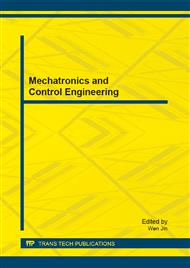p.361
p.366
p.372
p.378
p.384
p.389
p.396
p.401
p.409
Imbalanced Support Vector Machine Classification Based on Hyper-Sphere
Abstract:
In classification, when the distribution of the training data between classes is uneven, the learning algorithm is generally dominated by the feature of the majority classes. Features in the minority classes are normally difficult to be fully recognized. Hyper-sphere support vector machine is an important method for unbalanced classification which is an important issue, but this algorithm has a defect. In order to significantly improve the classification performance of imbalanced datasets, we propose a new method based on Generalized Hyper-sphere Support Vector Machine to enhance the classification accuracy for the minority classes. Support vector machine (SVM) is then used as the base classifier to train the reprocessed dataset. Our experimental results demonstrate that the proposed selection technique improves the classification rate of the rare events, and it also improves the overall accuracy of SVM without data pre-processing.
Info:
Periodical:
Pages:
384-388
Citation:
Online since:
July 2013
Authors:
Price:
Сopyright:
© 2013 Trans Tech Publications Ltd. All Rights Reserved
Share:
Citation:


